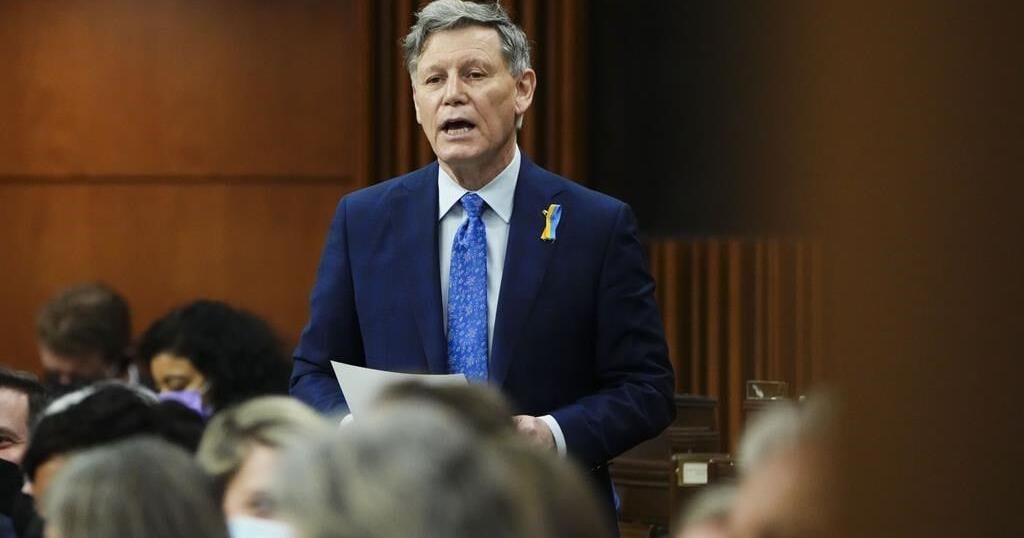OTTAWA – Liberal campaign co-chair Terry Duguid insisted Thursday that his caucus is united behind Prime Minister Justin Trudeau, even as the majority of elected Liberals remain silent on the prime minister’s political future.
The Canadian Press contacted dozens of Liberal MPs following the unexpected loss of a Toronto stronghold in a byelection earlier this week.
Most of them didn’t respond at all. Those who agreed to be quoted on the record, including Duguid, are all standing by Trudeau.
Several Liberals responded only on the condition they not be identified because they weren’t comfortable criticizing their leader in public at this point. Those MPs either suggested it’s time for Trudeau to go or, at the very least, that the caucus needs to meet soon to discuss how to move forward.
British Columbia MP Ken Hardie, who said he wants Trudeau to stay, said the lessons his party should learn from losing Toronto-St. Paul’s to the Conservatives requires a “collaborative discussion.”
The byelection loss happened just days after Parliamentarians left the House of Commons for the summer break and returned to their home ridings for the summer.
While some MPs have met with others in their own regions since Monday, the rest remain scattered across the country. The full caucus isn’t scheduled to gather again until a retreat in British Columbia before the House of Commons returns in September.
House Leader Steven MacKinnon said there is no need to meet earlier than that.
“I know the Prime Minister is listening very closely to all my colleagues and to ministers and others. There are a great number of feedback mechanisms available to us and I think we’ll be availing ourselves of all of them,” MacKinnon said at a press conference Thursday, and reiterated his support for Trudeau.
McKinnon said he’s also in regular contact with his caucus colleagues as part of his role as House leader.
Duguid, one of the few Liberal MPs outside of cabinet to speak publicly since the byelection loss, said in an interview Thursday that there had been some discussion of holding an early national caucus meeting but no decision had been made.
He said he believes his colleagues are united in their desire for Trudeau to stay on as leader.
“He has overwhelming support in our caucus,” Duguid said in an interview Thursday.
“The reality is the prime minister is a great campaigner and a great communicator and I’m excited about running under his banner in 2025.”
Several sitting Liberals credit Trudeau for improving their political fortunes since he became leader in 2013. He led them successfully through the last three elections, and pulled the party back into government just one election after its worst electoral showing ever in 2011.
Duguid admits many MPs are frustrated but adds those feelings stem from the struggle to connect with Canadians, not concerns about the prime minister.
“We talk to real people at the grocery store, at community events and we feel people’s frustrations. We want to do something about it and we are doing something about it,” he said.
The Liberals so far have confirmed the nominations of 102 candidates for the next election, and 100 of those are sitting MPs, accounting for roughly two-thirds of the 155-member caucus. Parker Lund, the party’s director of communications, expects to announce more in the coming weeks and months.
Toronto-area Liberal Shafqat Ali, who is nominated to run again in Brampton-Centre, said he doesn’t get the sense that people are planning to jump ship. However none of those nominated candidates are obligated to go through with the campaign when the time comes.
He said the Liberals need to “re-strategize and reanalyze” moving forward.
The Liberal’s defeat this week, in what was considered a safe seat for the Liberals in Toronto, suggests just how much trouble the party may be in heading into the next campaign. In 2011, when the Liberals won just 34 seats nationally, Carolyn Bennett hung on with some ease to Toronto-St. Paul’s.
For the seat to go to the Conservatives now could suggest an even worse result than 2011.
Duguid said he doesn’t put much stock in that concern, insisting Carolyn Bennett, whose resignation in January triggered the byelection, was a longtime Liberal incumbent and the seat was more about her than the party.
“It was a very much Carolyn Bennett riding,” he said.
This report by The Canadian Press was first published June 27, 2024.
— With files from Anja Karadeglija
